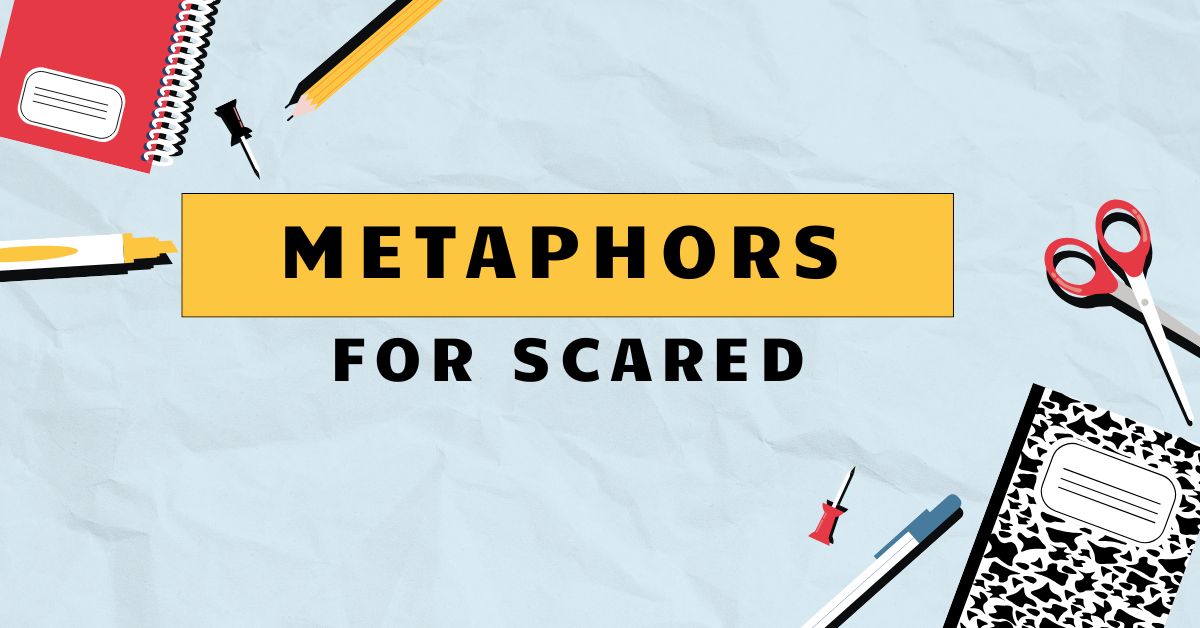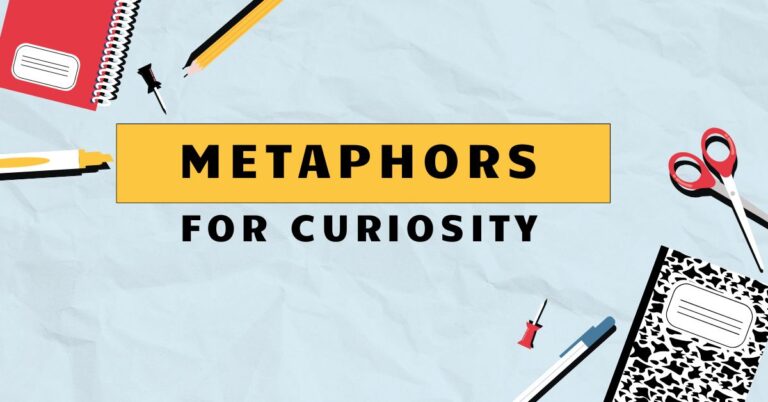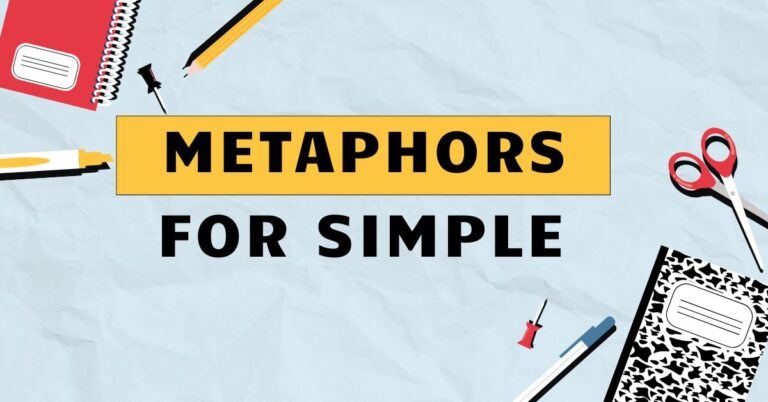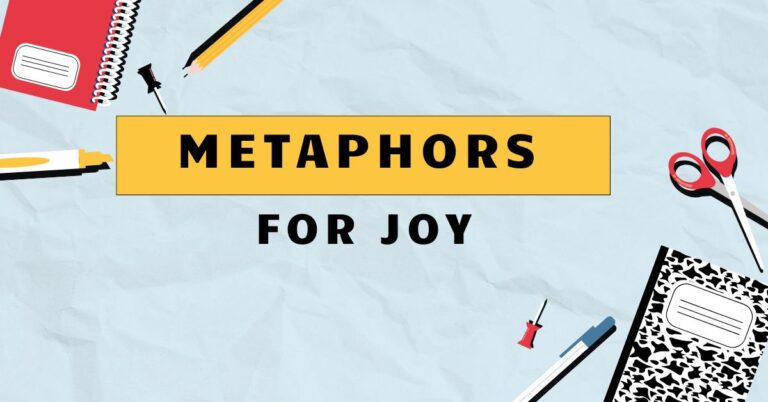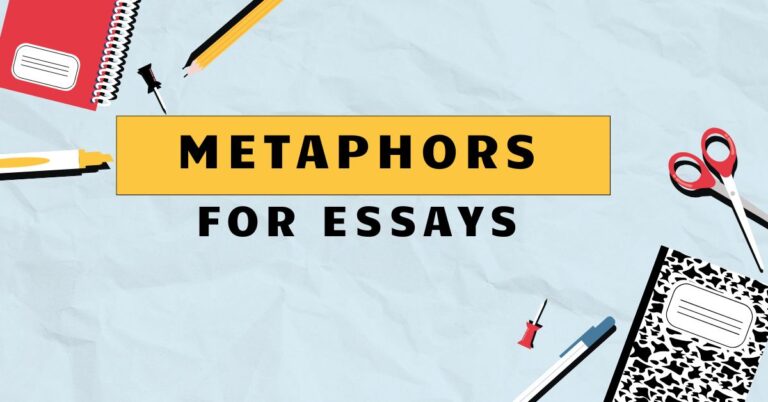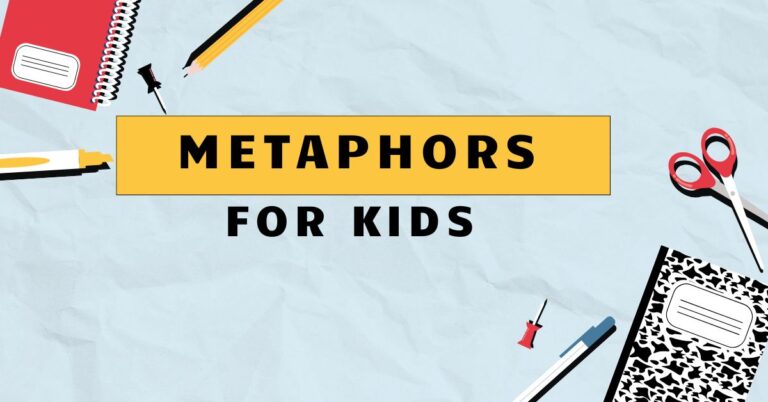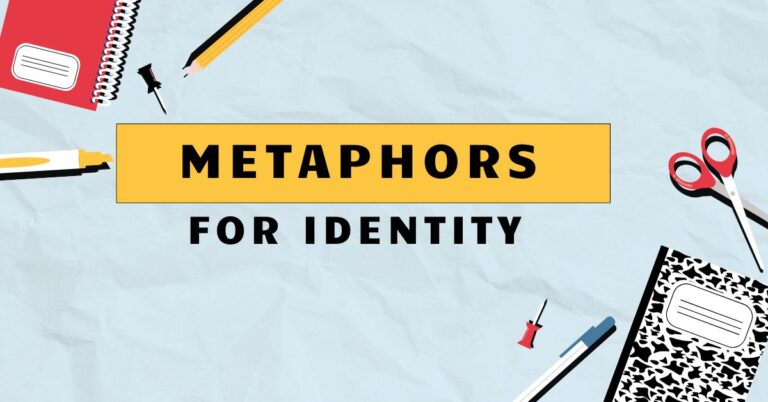39 Scared Similes: Mastering Metaphors & Figures of Speech
Understanding how to use metaphors and similes to describe fear is crucial for vivid and engaging writing. This article explores various figures of speech that convey the feeling of being scared, enhancing your ability to express emotions effectively.
Whether you’re a student, writer, or English language learner, this guide will provide you with the tools and knowledge to master the art of depicting fear through creative language, ensuring your writing resonates deeply with your audience and adds depth to your storytelling.
Table of Contents
- Introduction
- Definition of Metaphors and Similes
- Structural Breakdown
- Types of Metaphors for Scared
- Animal Metaphors
- Weather Metaphors
- Object Metaphors
- Physical Reaction Metaphors
- Abstract Concept Metaphors
- Examples of Metaphors for Scared
- Animal Metaphors Examples
- Weather Metaphors Examples
- Object Metaphors Examples
- Physical Reaction Metaphors Examples
- Abstract Concept Metaphors Examples
- Usage Rules
- Common Mistakes
- Practice Exercises
- Advanced Topics
- FAQ
- Conclusion
Definition of Metaphors and Similes
Ametaphoris a figure of speech that directly compares two unrelated things without using “like” or “as,” implying a similarity between them. It’s a powerful tool for creating vivid imagery and conveying complex emotions in a concise manner.
A metaphor suggests that one thing *is* another, transferring qualities from one concept to the other.
A simile, on the other hand, is a figure of speech that compares two unrelated things using “like” or “as.” It explicitly states the similarity between the two concepts, making the comparison more direct and obvious. Similes are also useful for creating vivid imagery, but they tend to be less subtle than metaphors.
In the context of describing fear, metaphors and similes allow writers and speakers to express the intensity and nature of the emotion in creative and impactful ways. Instead of simply stating “I was scared,” one might say “Fear gripped me like a vise” (simile) or “Fear was a cold hand on my heart” (metaphor).
Structural Breakdown
The structure of a metaphor typically involves two key components: thetenorand thevehicle. The tenor is the subject being described (in this case, the feeling of being scared), and the vehicle is the object or concept used to describe it.
The effectiveness of a metaphor lies in the connection between the tenor and the vehicle, and how well the vehicle conveys the qualities of the tenor.
For example, in the metaphor “Fear was a dark cloud,” the tenor is “fear,” and the vehicle is “a dark cloud.” The metaphor works because dark clouds are associated with feelings of gloom, uncertainty, and impending danger, which are all qualities that can be associated with fear.
Similes follow a similar structure but also include a word of comparison, such as “like” or “as.” The structure is: Subject + Verb + “like” or “as” + Object. In the simile “He was as white as a ghost,” “he” is the subject, and “a ghost” is the object, with “as” serving as the comparison word.
This structure makes the comparison direct and explicit.
Types of Metaphors for Scared
There are various categories of metaphors that can be used to describe the feeling of being scared, each drawing on different types of imagery and associations. Here are a few key categories:
Animal Metaphors
Animal metaphors use the characteristics and behaviors of animals to describe fear. This can be particularly effective because certain animals are commonly associated with fear or vulnerability (e.g., a mouse, a deer, a rabbit).
Weather Metaphors
Weather metaphors use elements of weather to represent fear. Storms, darkness, and cold are often used to convey the intensity and unpleasantness of fear.
Object Metaphors
Object metaphors use inanimate objects to describe fear. These can range from heavy objects (e.g., a weight) to sharp objects (e.g., a knife) depending on the desired effect.
Physical Reaction Metaphors
Physical reaction metaphors describe fear by comparing it to tangible physical sensations or reactions. These metaphors often focus on the body’s response to fear, such as trembling, sweating, or a racing heart.
Abstract Concept Metaphors
Abstract concept metaphors use abstract ideas or concepts to describe fear. These metaphors can be more subtle and require a deeper understanding of the associated concepts.
Examples of Metaphors for Scared
Here are examples of metaphors and similes for “scared,” categorized by type. Each example is designed to illustrate how different vehicles can be used to convey the feeling of fear.
Animal Metaphors Examples
These examples use animals and their characteristics to illustrate the feeling of being scared. The chosen animals often evoke feelings of vulnerability, defenselessness, or panic.
| Metaphor/Simile | Explanation |
|---|---|
| He was as timid as a mouse. | Compares his timidity to the natural fearfulness of a mouse. |
| She felt like a deer caught in headlights. | Describes the feeling of being paralyzed by fear. |
| His heart pounded like a trapped bird. | Illustrates the quick, frantic beating of a heart due to fear. |
| Fear made him a cowering dog. | Suggests a posture of submission and vulnerability due to fear. |
| She trembled like a leaf in a storm. | Connects the uncontrollable shaking to the vulnerability of a leaf. |
| He was as jumpy as a cat on a hot tin roof. | Describes extreme nervousness and restlessness due to fear. |
| She felt like a lamb being led to slaughter. | Conveys a sense of impending doom and helplessness. |
| His fear was a venomous snake coiling in his stomach. | Illustrates the insidious and unsettling nature of fear. |
| She was as quiet as a mouse hiding from the cat. | Describes the extreme silence caused by fear. |
| He felt like a cornered rat. | Suggests a feeling of desperation and panic. |
| Her nervousness was a swarm of bees in her chest. | Describes the buzzing, agitated feeling of anxiety. |
| He was as helpless as a baby bird fallen from its nest. | Conveys a sense of vulnerability and dependence. |
| She felt like a butterfly pinned under glass. | Illustrates the feeling of being trapped and unable to escape. |
| His courage was as fleeting as a hummingbird’s visit. | Describes the brief and unreliable nature of bravery in the face of fear. |
| She was like a frightened kitten, all wide eyes and trembling paws. | Paints a picture of innocent fear and vulnerability. |
| His fear was a lurking predator in the shadows of his mind. | Illustrates the constant, underlying presence of fear. |
| She felt like a wounded animal, trying to hide from danger. | Conveys a sense of pain and the need for protection. |
| His voice was as shaky as a newborn foal’s legs. | Describes the unsteady quality of his voice due to fear. |
| She was as skittish as a wild horse. | Suggests a tendency to startle easily and react fearfully. |
| He felt like a lone wolf surrounded by hunters. | Illustrates a feeling of isolation and vulnerability. |
| Her worry was a persistent mosquito buzzing around her head. | Describes a nagging, irritating feeling of anxiety. |
| He was as slow and deliberate as a tortoise withdrawing into its shell. | Conveys a sense of cautiousness and self-protection. |
| She felt like a fish out of water, gasping for air. | Describes a feeling of being completely out of place and vulnerable. |
| His fear was a spider weaving a web of anxiety around him. | Illustrates the feeling of being trapped and ensnared by fear. |
Weather Metaphors Examples
These examples use weather elements to depict the feeling of being scared. Storms, darkness, and cold are employed to convey the intensity and unpleasantness of fear.
| Metaphor/Simile | Explanation |
|---|---|
| Fear washed over him like a cold wave. | Describes the sudden and overwhelming nature of fear. |
| She was frozen in fear. | Implies a state of paralysis caused by intense fear. |
| His fear was a dark cloud hanging over him. | Suggests a looming sense of dread and uncertainty. |
| The silence was as thick as fog. | Describes an oppressive and unsettling silence. |
| Fear struck him like a bolt of lightning. | Illustrates the sudden and shocking impact of fear. |
| Her anxiety was a relentless downpour. | Describes a persistent and overwhelming feeling of worry. |
| He felt like he was walking through a blizzard of terror. | Conveys a sense of disorientation and danger. |
| Her fear was a chilling wind that cut through her bones. | Illustrates the penetrating and uncomfortable nature of fear. |
| He was as pale as a winter sky. | Describes the loss of color in his face due to fear. |
| She felt like she was drowning in a sea of anxiety. | Suggests a feeling of being overwhelmed and unable to cope. |
| His fear was a heavy fog, obscuring his thoughts. | Describes the way fear can cloud judgment and clarity. |
| She was as brittle as ice on a frozen lake. | Conveys a sense of fragility and vulnerability. |
| He felt like he was caught in a hurricane of panic. | Illustrates the chaotic and uncontrollable nature of fear. |
| Her fear was a cold, damp mist clinging to her skin. | Describes a lingering and uncomfortable feeling of unease. |
| He was as shaken as a tree in a thunderstorm. | Suggests a state of emotional turmoil and instability. |
| She felt like she was trapped in a never-ending night. | Conveys a sense of hopelessness and despair. |
| His fear was a looming shadow that followed him everywhere. | Describes the constant, inescapable presence of fear. |
| She was as still as the eye of a storm. | Illustrates a deceptive calm masking inner turmoil. |
| He felt like he was being swept away by a tidal wave of fear. | Suggests a feeling of being overwhelmed and powerless. |
| Her fear was a sudden squall that threatened to capsize her. | Describes a brief but intense surge of panic. |
| He was as lost as a ship in a dense fog. | Conveys a sense of disorientation and uncertainty. |
| She felt like she was walking on thin ice, ready to crack at any moment. | Illustrates a feeling of precariousness and impending danger. |
| His fear was a slow, creeping frost that numbed his senses. | Describes the gradual and debilitating effect of fear. |
| She was as fragile as a snowflake in the heat. | Suggests a sense of vulnerability and impermanence. |
| He felt like he was being buried alive under an avalanche of fear. | Conveys a feeling of being completely overwhelmed and suffocated. |
Object Metaphors Examples
These examples use inanimate objects to describe fear. The objects range from heavy to sharp, depending on the desired effect.
| Metaphor/Simile | Explanation |
|---|---|
| Fear was a heavy weight on his chest. | Describes the oppressive and burdensome nature of fear. |
| She felt like her heart was a lead weight in her chest. | Implies a feeling of heaviness and sorrow due to fear. |
| His fear was a cage trapping him. | Suggests a feeling of being confined and unable to escape. |
| She felt like she was walking on eggshells. | Describes a state of extreme caution and anxiety. |
| His fear was a knife twisting in his gut. | Illustrates the sharp and painful nature of fear. |
| Her anxiety was a tightrope she was forced to walk. | Describes a precarious and stressful situation. |
| He felt like he was trapped in a labyrinth of fear. | Conveys a sense of confusion and entrapment. |
| Her fear was a brick wall blocking her path. | Illustrates an insurmountable obstacle. |
| He was as stiff as a board with fear. | Describes the physical rigidity caused by fear. |
| She felt like she was being crushed under a mountain of worry. | Suggests a feeling of being overwhelmed by anxiety. |
| His fear was a ticking time bomb. | Describes a sense of impending doom. |
| She was as fragile as glass, ready to shatter. | Conveys a sense of vulnerability and emotional instability. |
| He felt like he was drowning in a sea of quicksand. | Illustrates a feeling of helplessness and being pulled down. |
| Her fear was a rusty lock on her heart. | Describes a barrier to emotional openness. |
| He was as cold as steel, devoid of emotion. | Suggests a detachment caused by fear. |
| She felt like she was trapped in a hall of mirrors, distorted and confused. | Conveys a sense of disorientation and self-doubt. |
| His fear was a dark stain spreading through his mind. | Describes the corrupting influence of fear. |
| She was as silent as a stone, unable to speak. | Illustrates the muteness caused by fear. |
| He felt like he was being strangled by an invisible rope. | Suggests a feeling of suffocation and panic. |
| Her fear was a venomous dart piercing her heart. | Describes a sudden and painful emotional blow. |
| He was as tense as a coiled spring, ready to snap. | Conveys a sense of pent-up anxiety and readiness to react. |
| She felt like she was walking a tightrope over a chasm of despair. | Illustrates a precarious and dangerous situation. |
| His fear was a heavy chain dragging him down. | Describes a burden that is holding him back. |
| She was as hollow as an empty shell, devoid of feeling. | Suggests a sense of emptiness and emotional numbness. |
| He felt like he was being buried alive under a pile of rubble. | Conveys a feeling of being overwhelmed and suffocated. |
Physical Reaction Metaphors Examples
These metaphors describe fear by comparing it to tangible physical sensations or reactions, focusing on the body’s response.
| Metaphor/Simile | Explanation |
|---|---|
| Fear made his blood run cold. | Describes the chilling sensation of fear. |
| Her heart raced like a runaway train. | Illustrates the rapid heartbeat caused by fear. |
| His skin crawled with fear. | Suggests a feeling of unease and revulsion. |
| She felt a knot of fear tighten in her stomach. | Describes the physical discomfort of anxiety. |
| His breath hitched in his throat. | Illustrates the difficulty breathing caused by fear. |
| Her legs turned to jelly. | Describes the weakening of the legs due to fear. |
| He felt a cold sweat break out on his forehead. | Illustrates the physical manifestation of fear. |
| Her voice was a mere whisper, choked with fear. | Describes the weakened voice caused by fear. |
| He felt his muscles tense, ready to flee. | Suggests the body’s preparation for fight or flight. |
| She felt a shiver run down her spine. | Describes the physical sensation of fear. |
| His hands were clammy with fear. | Illustrates the sweaty palms caused by anxiety. |
| She felt her face flush with panic. | Describes the physical reaction of blushing due to fear. |
| His stomach churned with anxiety. | Illustrates the nauseous feeling caused by fear. |
| She felt her throat constrict with terror. | Describes the feeling of being unable to swallow due to fear. |
| His vision blurred with fear. | Suggests the disorienting effect of fear on sight. |
| She felt her head spin with dizziness. | Describes the lightheadedness caused by fear. |
| His teeth chattered uncontrollably. | Illustrates the physical shaking caused by fear. |
| She felt her pulse pound in her ears. | Describes the heightened awareness of her heartbeat due to fear. |
| His limbs felt heavy and leaden. | Suggests the feeling of being weighed down by fear. |
| She felt her skin prickle with goosebumps. | Describes the physical sensation of fear-induced goosebumps. |
| His chest tightened with anxiety. | Illustrates the feeling of restricted breathing due to fear. |
| She felt her body tremble from head to toe. | Describes the full-body shaking caused by fear. |
| His mouth went dry with fear. | Illustrates the physical symptom of dehydration due to anxiety. |
| She felt her senses sharpen, hyper-aware of every detail. | Suggests the heightened awareness caused by fear. |
| His muscles screamed in protest, begging him to run. | Describes the body’s instinctive reaction to flee from danger. |
Abstract Concept Metaphors Examples
These metaphors use abstract ideas or concepts to describe fear, requiring a deeper understanding of the associated concepts.
| Metaphor/Simile | Explanation |
|---|---|
| Fear was a shadow lurking in the corners of his mind. | Describes the constant, underlying presence of fear. |
| She felt like her courage was a fragile thread. | Illustrates the vulnerability of bravery in the face of fear. |
| His fear was a virus infecting his thoughts. | Suggests the corrupting influence of fear. |
| She felt like hope was a distant star. | Describes the feeling of being far from safety and comfort. |
| His fear was a prison of his own making. | Illustrates the self-imposed nature of anxiety. |
| Her anxiety was a tangled web of worries. | Describes the complex and interconnected nature of her concerns. |
| He felt like his confidence was a house of cards. | Conveys a sense of fragility and impending collapse. |
| Her fear was a ghost from the past haunting her. | Illustrates the lingering impact of past trauma. |
| He felt like his sanity was a tightrope walk. | Suggests a precarious and unstable mental state. |
| She felt like peace was a forgotten dream. | Describes the feeling of being disconnected from tranquility. |
| His fear was a silent scream trapped inside him. | Illustrates the internal struggle of repressed anxiety. |
| She felt like her identity was a shifting sand. | Conveys a sense of uncertainty and instability. |
| His fear was a bottomless pit swallowing him whole. | Illustrates the overwhelming and consuming nature of fear. |
| She felt like her future was a blank canvas. | Describes the uncertainty and potential of what lies ahead. |
| His fear was a silent judge condemning him. | Suggests the self-critical nature of anxiety. |
| She felt like her memories were a broken mirror. | Conveys a sense of fragmentation and distortion. |
| His fear was a constant battle raging within him. | Illustrates the internal conflict caused by anxiety. |
| She felt like her spirit was a caged bird longing to fly. | Describes a feeling of confinement and a desire for freedom. |
| His fear was a dark secret he couldn’t escape. | Suggests the burden of hidden anxieties. |
| She felt like her reality was a distorted reflection. | Conveys a sense of unreality and unease. |
| His fear was a relentless tide eroding his resolve. | Illustrates the gradual weakening of his determination. |
| She felt like her heart was a shattered vase, irreparable. | Describes a feeling of emotional damage and loss. |
| His fear was a labyrinthine maze with no exit. | Conveys a sense of entrapment and hopelessness. |
| She felt like her mind was a battlefield of conflicting thoughts. | Illustrates the internal chaos caused by anxiety. |
| His fear was a parasitic entity feeding on his strength. | Describes the draining and debilitating effect of anxiety. |
Usage Rules
When using metaphors and similes to describe fear, it’s important to follow certain rules to ensure clarity and effectiveness:
- Ensure Relevance: The vehicle (the object or concept used for comparison) should have a clear and logical connection to the tenor (the feeling of fear). The comparison should highlight specific qualities of fear that you want to emphasize.
- Avoid Clichés: While some common metaphors can be effective, overuse can diminish their impact. Try to create original and imaginative comparisons that will resonate with your audience.
- Maintain Consistency: Once you establish a metaphor, maintain consistency throughout your writing. Avoid mixing metaphors that create confusing or contradictory images.
- Consider Your Audience: Choose metaphors that will be easily understood and appreciated by your target audience. Cultural background and prior knowledge can influence how a metaphor is interpreted.
- Use Sparingly: While metaphors can add depth and color to your writing, overuse can make your writing feel cluttered and distracting. Use metaphors strategically to emphasize key points and create memorable images.
Common Mistakes
Here are some common mistakes to avoid when using metaphors and similes to describe fear:
| Incorrect | Correct | Explanation |
|---|---|---|
| His fear was a bright light. | His fear was a blinding light. | “Bright light” doesn’t typically evoke fear; “blinding light” suggests being overwhelmed. |
| She was as brave as a mouse. | She was as timid as a mouse. | Mice are generally associated with timidity, not bravery. |
| Fear ran through him like slow molasses. | Fear ran through him like ice water. | Molasses is slow and thick, not typically associated with the sudden shock of fear. |
| He felt like he was swimming in a pool of sunshine. | He felt like he was drowning in a sea of despair. | Sunshine is comforting, not fearful; despair aligns with fear. |
| Her fear was a tall building. | Her fear was a crumbling building. | A tall building doesn’t inherently suggest fear; a crumbling building implies instability. |
| His fear was a calm breeze. | His fear was a howling wind. | Calm breezes are soothing, while howling winds evoke chaos and fear. |
| She was as relaxed as a coiled snake. | She was as tense as a coiled snake. | Coiled snakes are often associated with tension and potential danger. |
| His fear was a gentle rain. | His fear was a torrential downpour. | Gentle rain is calming, while a torrential downpour is overwhelming. |
| She felt like she was floating on a cloud of happiness. | She felt like she was sinking into a pit of despair. | Happiness is the opposite of fear; despair aligns with the feeling of being scared. |
| His fear was a soft blanket. | His fear was a cold chain. | A soft blanket is comforting, while a cold chain suggests restriction and fear. |
Practice Exercises
Improve your understanding of metaphors and similes for “scared” with these exercises:
| Question | Answer |
|---|---|
| 1. Complete the simile: “He was as scared as __________.” | a ghost |
| 2. Create a metaphor for fear using the concept of “darkness.” | Fear was a suffocating darkness. |
| 3. Rewrite the sentence using a simile: “She was very afraid.” | She was as scared as a rabbit caught in headlights. |
| 4. Identify the vehicle in the metaphor: “Fear was a cold hand on his shoulder.” | a cold hand |
| 5. Complete the metaphor: “His heart was a __________ drum.” | pounding |
| 6. Create a simile using “like” to describe a trembling person. | He trembled like a leaf in the wind. |
| 7. What emotion does the metaphor “Fear was a prison” evoke? | Entrapment |
| 8. Rewrite the sentence using a metaphor: “He was paralyzed by fear.” | Fear turned him to stone. |
| 9. Complete the simile: “She felt like she was walking on __________.” | eggshells |
| 10. Create a metaphor for fear using the concept of “ice.” | Fear was a sheet of ice gripping his heart. |
| Question | Answer |
|---|---|
| 1. Complete the simile: “He was as frightened as __________.” | a child lost in the woods |
| 2. Create a metaphor for fear using the concept of “storm.” | Fear was a violent storm raging within him. |
| 3. Rewrite the sentence using a simile: “She was extremely nervous.” | She was as jumpy as a cat on a hot tin roof. |
| 4. Identify the vehicle in the metaphor: “Fear was a monster lurking in the shadows.” | a monster |
| 5. Complete the metaphor: “His mind was a __________ of anxiety.” | battlefield |
| 6. Create a simile using “as” to describe a person’s voice when scared. | Her voice was as shaky as a leaf in the wind. |
| 7. What feeling does the metaphor “Fear was a heavy chain” evoke? | Burden |
| 8. Rewrite the sentence using a metaphor: “He was overwhelmed by fear.” | Fear swallowed him whole. |
| 9. Complete the simile: “She felt like she was sinking in __________.” | quicksand |
| 10. Create a metaphor for fear using the concept of “spiderweb.” | Fear was a spiderweb trapping his thoughts. |
Advanced Topics
For advanced learners, consider these more complex aspects of using metaphors and similes for “scared”:
- Extended Metaphors: Develop a single metaphor throughout an entire piece of writing, creating a richer and more sustained image.
- Subverted Metaphors: Use unexpected or contradictory vehicles to create a surprising and unsettling effect.
- Cultural Context: Explore how cultural differences influence the interpretation and effectiveness of metaphors for fear.
- Symbolism: Use metaphors that draw on deeper symbolic meanings to add layers of complexity to your writing.
FAQ
- What is the difference between a metaphor and a simile?
A metaphor directly compares two unrelated things without using “like” or “as,” while a simile compares two unrelated things using “like” or “as.” Metaphors are more implicit, while similes are more explicit.
- Why are metaphors and similes useful in describing fear?
They allow you to convey the intensity and nature of fear in a vivid and engaging way, creating a stronger emotional impact on the reader.
- How can I avoid using clichés when writing metaphors for fear?
Brainstorm unconventional comparisons, focus on specific qualities of fear, and consider using sensory details to create original and memorable images.
- What are some common categories of metaphors for fear?
Animal metaphors, weather metaphors, object metaphors, physical reaction metaphors, and abstract concept metaphors are all common categories.
- How do I choose the right metaphor for my writing?
Consider your target audience, the specific qualities of fear you want to emphasize, and the overall tone and style of your writing.
-
Can a metaphor or simile be too complex?
Yes, if the comparison is too obscure or requires too much specialized knowledge, it may confuse or alienate your audience. Aim for clarity and relevance.
Conclusion
Mastering the use of metaphors and similes to describe fear can significantly enhance your writing, making it more vivid, engaging, and emotionally resonant. By understanding the different types of metaphors, following usage rules, and avoiding common mistakes, you can effectively convey the intensity and complexity of fear in your work.
Keep practicing, experimenting with different comparisons, and refining your skills to become a more expressive and impactful writer.

